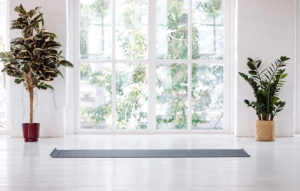
What Pilates is:
Pilates is an exercise style that consists of a flowing series of movements to work the mind and muscles in harmony to build muscular strength and endurance, flexibility, mobility and stabilisation and balance within the body. Developed in the 1920’s, Pilates focusses on training the body as a whole, while strongly concentrating on the core muscles. It is an effective way to build both lower and upper body strength, while improving posture and rehabilitating injuries. Pilates is heavily focussed on the way the movement flows and is performed and set up, not so much the amount of resistance or quantity of movement. Despite being around for a century, it is only now growing in popularity as people discover its benefits and develop the exercise style even further.
While Pilates is similar to a traditional weights-based gym program in the sense that it is a strength-based exercise, Pilates is a lower intensity exercise system. Pilates has a higher focus on muscular activation and working the stabilising muscles, which can be hard to focus on with a more traditional weights program. Personally, I believe both a weight-based gym program and Pilates work together nicely to create a holistic program, that focusses on both building and maintaining muscular strength, while increasing mobility, balance, and deep connection with the body.
There are 8 key principles of Pilates, including:
- Concentration- Pilates aims to retrain the body to function and move more efficiently, therefore making it a mental challenge as well as physical. You must focus on performing the movements with correct posture, correct breathing to aid the movements and maintaining correct patterns of movement and muscle activation.
- Centring- Pilates focuses heavily on the core muscles of the body to strengthen the core, prevent injuries, improve posture, and create a stable base for the rest of the movements. Therefore, during a Pilates workout, you must consciously maintain focus on the centre (core) of your body, making Pilates a very mindful practice.
- Breathing- Each exercise in Pilates requires a particular breathing pattern to improve the effectiveness of the exercise. The correct pattern of breath aids in increasing blood circulation and oxygen supply to the muscle and correct muscle activation.
- Control- Performing each exercise with complete control is important as it prevents injury, aids in training the body to move more effectively and strengthens the intended muscle. Activation of smaller stabilising muscles is often required to control the movement.
- Precision- As with all styles of exercise, executing an exercise with correct form and precision is more important than completing the movement faster and for higher reps with incorrect form. In Pilates, all movements need to be precise, and executed with correct posture and activation. Pilates instructors will often cue 4-5 different points when instructing an exercise, to ensure precision and correct form is used.
- Flow- Pilates classes are completed through a flow of movements, meaning that you move from each exercise with fluidity. There is little stopping in Pilates, as you flow continuously from movement to movement. Specific start and stop times and set amounts of repetitions are not often used as the focus is on the muscles time under tension. This style of movement requires higher eccentric control and helps the muscles work in all directions of the movement.
- Isolation- In Pilates, isolation of particular muscles is required to perform the movements and effectively strengthen the muscles being worked. This can look like isolating the smaller muscles required for the stabilisation of a movement or isolating the larger muscles you want to strengthen, dependent on the exercise. By isolating correctly, you ensure the correct muscles are being worked and the highest benefits are received.
- Routine and Consistency- A regular Pilates practice is essential in ensuring you receive the long-term benefits Pilates has to offer and makes sure the muscles, brain and nervous system don’t forget the patterns of movements taught. As Pilates works to retrain the way you move to be more effective, a regular practice is a must.
There are 2 main types of Pilates: Matwork and Reformer.
Matwork Pilates is performed on the ground and requires no equipment. This style was developed before reformer and can be done anywhere. It provides a whole-body workout, using mainly body weight as resistance. Additional equipment such as resistance bands, Pilates rings and dumbbells may be used, however is typically done with just yourself and the mat. This makes it an easily accessible exercise option for everybody.
Reformer Pilates is done using a Pilates Reformer machine. A Reformer workout can be more dynamic than Matwork due to the use of the machines springs which create additional resistance. This style has slightly different exercises to Matwork due to the use of the machine.
While Matwork and Reformer Pilates are slightly different, they both focus heavily on core strength and provide a full body strengthening workout. They share the same foundations and follow the same core principles.
Where you can find it:
You can find Pilates classes at many gyms and fitness facilities, Pilates and Yoga studios, and online. While every class is slightly different as each instructor has their own style of teaching, most classes are between 45-60 minutes long, and are full body.
While skewing slightly from traditional Pilates, shorter classes are available as well, especially online, and tend to focus on a specific body part for the whole workout (e.g. 20-minute lower body Pilates).
Whether you love a more traditional style full body Pilates workout, use it to supplement your own training routine, prevent or rehabilitate an injury, or prefer a shorter class targeting a specific body area or muscle, there are so many ways it can benefit you. I encourage you to trial a few classes and styles of Pilates and find a style that works for you!
Copyright © Tabi May Life


 Choc-Berry Protein Pancakes Recipe
Choc-Berry Protein Pancakes Recipe
Leave a Reply